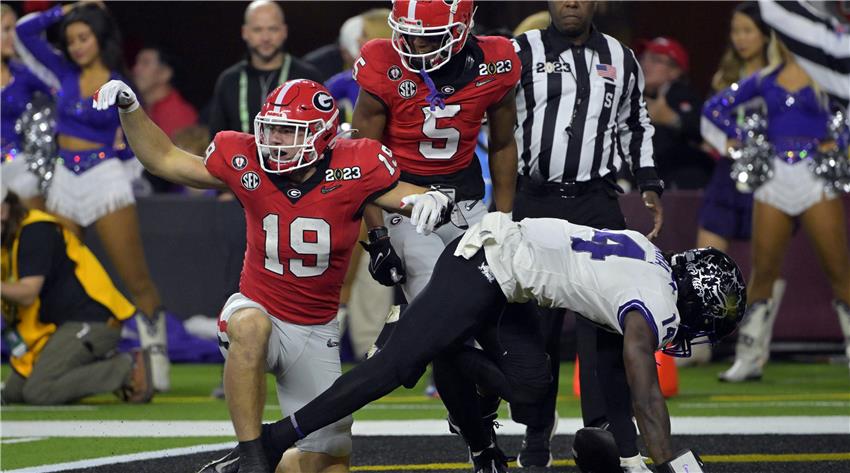
Unlocking the Financial Playbook- An In-Depth Guide to How NFL Teams Earn
The National Football League (NFL) stands as one of the most lucrative and widely recognized professional sports leagues globally. With its blend of athleticism, strategy, and entertainment, it captures the attention of millions of fans.
However, beyond the touchdowns and trophy celebrations, a complex financial ecosystem plays a crucial role in sustaining the league's operations and growth. This article dives into the various revenue streams that contribute to NFL teams' earnings, offering a concise yet comprehensive overview.
Revenue Sharing: The Cornerstone of Team Earnings
At the heart of the NFL's economic model is its revenue-sharing program. This system ensures a level playing field, promoting competitive balance among teams. The league generates income from several sources, which are then distributed among the 32 teams. The primary sources include:
- National Television Contracts: The NFL's agreements with major broadcasters account for a significant portion of its revenue. These multi-billion-dollar contracts are evenly split among all teams, guaranteeing a substantial base income.
- Merchandising and Licensing: Sales from jerseys, video games, and other NFL-branded merchandise are pooled and shared. The NFL operates through NFL Enterprises, ensuring teams benefit from the league-wide popularity.
- Ticket Sales: While a portion of ticket revenue remains with the home team, a share is contributed to a league-wide pool, further supporting revenue sharing.
- Local Revenue: Tailoring the Team Experience
In addition to shared revenue, teams generate income through local avenues:
- Stadium Naming Rights and Sponsorships: Teams negotiate these deals independently, offering lucrative opportunities to partner with corporations.
- Premium Seating and Hospitality: Luxury suites and club seating provide teams with significant revenue, which they do not have to share with the league.
- Local Broadcasting: Teams can also earn from local radio and television deals, enhancing their regional footprint.
Betting: A Rising Contributor to the NFL Ecosystem
With the legalization of sports betting in several U.S. states, the NFL has embraced betting as a new revenue stream. Partnerships with betting companies not only bring direct income but also enhance fan engagement. Fans who engage in betting, such as placing their NFL predictions with sportbet.one/sports/football, contribute to the league's popularity and financial health. This symbiotic relationship between the NFL and betting platforms underscores the evolving landscape of sports consumption and monetization.
International Expansion
While the NFL primarily operates in the United States, international expansion efforts are gaining momentum. Games played abroad, particularly in London and Mexico City, attract new audiences and open doors to diverse revenue streams. Moreover, international partnerships and merchandise sales extend the league's global reach, tapping into markets with growing interest in American football. As the NFL continues to explore opportunities beyond its domestic borders, international expansion presents a promising avenue for revenue growth and brand exposure.
Social Responsibility Initiatives
Beyond financial gains, NFL teams increasingly prioritize social responsibility initiatives, leveraging their platform to address societal issues. Many teams engage in community outreach programs, charitable events, and educational initiatives aimed at making a positive impact beyond the field. These efforts not only enhance the team's reputation but also contribute to the overall well-being of their communities, fostering goodwill and loyalty among fans.
The Role of the NFL Draft and Salary Cap
The NFL Draft and salary cap are critical components of the league's financial structure. The draft allows teams to select college players, offering a cost-effective way to build talent. The salary cap, meanwhile, ensures competitive balance by limiting the amount teams can spend on player salaries. This mechanism prevents wealthier teams from monopolizing talent, ensuring a more level playing field.
Digital Ventures: Expanding the Playbook
The NFL's foray into digital media, including streaming rights, social media, and video games, represents a growing sector of its revenue. Exclusive content deals with platforms like Amazon Prime Video and the development of NFL-themed mobile games diversify income sources and expand global reach. These digital ventures cater to a younger, tech-savvy audience, securing the league's future fan base and revenue streams.
The Economic Impact of COVID-19
The COVID-19 pandemic posed significant challenges to the NFL's economic model, particularly impacting ticket sales and in-stadium revenues. However, the league's adaptability, through enhanced broadcasting experiences and virtual fan engagements, mitigated financial setbacks. This resilience underscores the NFL's capacity to navigate uncertainties, maintaining its financial health and commitment to fans and players alike.
Conclusion
The NFL's economic model is a multifaceted system that combines revenue sharing, local income, strategic partnerships, and digital innovation. This model not only ensures the league's financial stability but also promotes competitive balance, making the NFL a perennial powerhouse in the world of professional sports. As the landscape of entertainment and sports continues to evolve, the NFL's adaptability and forward-thinking approach will undoubtedly keep it at the forefront of global sports leagues.
